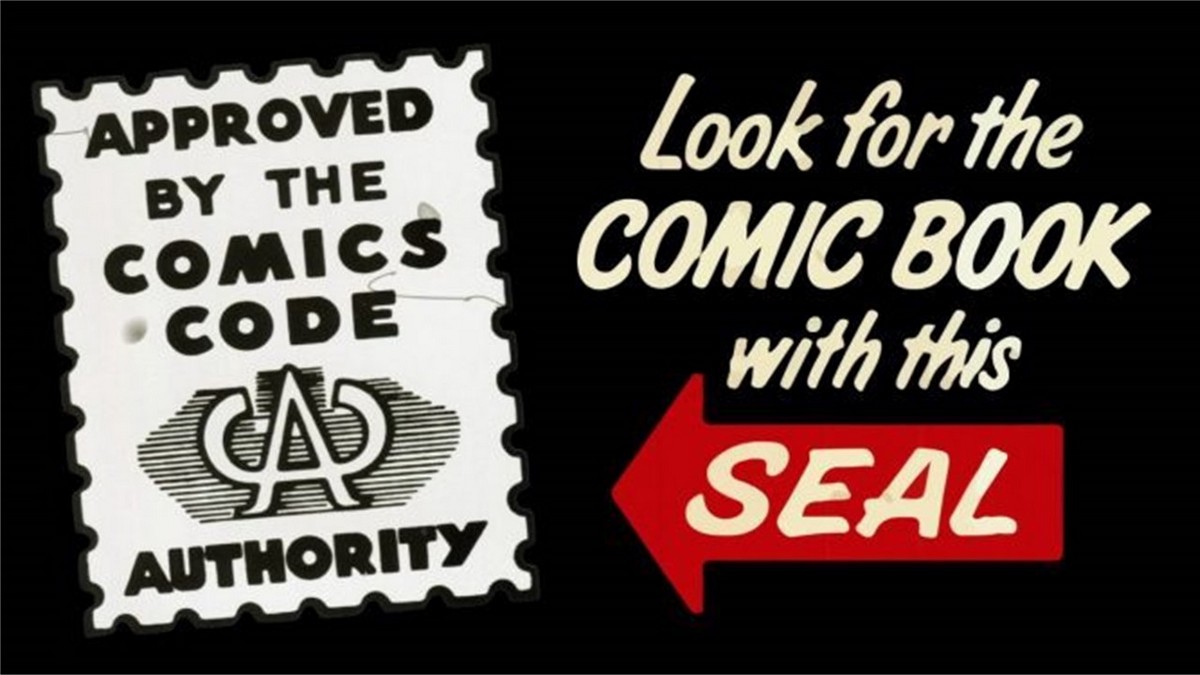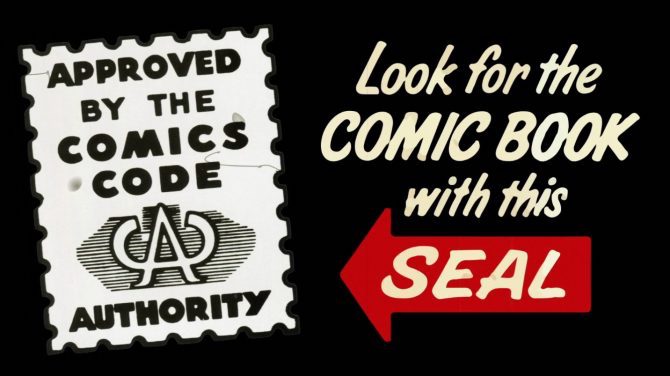Seduction of the Innocent and The Effect Of The Comics Code Authority

Join the community on Reddit for the latest Marvel & DC news!
One of the most terrifying events of my life time happened many years ago when I was in high school. In 1999, Eric Harris and Dylan Klebold walked into Columbine High School and
The Columbine massacre caused a
Of all musicians Marilyn Manson sat at the forefront of the finger pointing. Those finger pointing claimed that because the boys listened to his music, he was indirectly responsible for what happened. People began to claim that he promoted violent behaviour that preached hate, suicide, death, and drug use.
Marylin Manson became the poster child and scapegoat for a much bigger problem.
As a comic site, why do I even talk about Columbine?
Seduction of the Innocent
In 1954, with an ever-growing eye on the comic book industry, Fredric Wertham published the most influential book in comic history. His book called “Seduction of the Innocent” caused a ripple so large that it’s still felt today. the book, for everything it did, forced publishers to bring back the once-thought-dead superhero genre, caused the voluntary formation of the Comics Code Authority, and brought about a microscopic view of its books.
At the end of the Golden Age of comics, sales of Superhero themed books began to tumble. This resulted in the cancellation of many of the most well-known titles in circulation. Longstanding books like Captain America, Flash, and Green Lantern began to feel the pinch and were either rebranded under a different title or canceled altogether.
The times had changed, and superhero books were no longer fashionable. In their place stood Westerns, Horrors, Sci-Fi, and Romance. And with these grew a desire for more. Publishers knew that the generation that was now reading their books wasn’t interested in fairytales about good vs. evil. Instead, they were interested in books depicting violent crimes, and over-the-top imagery.
The comic book industry was moving ahead at breakneck speeds, and the world wasn’t ready for it.
The beginning
By 1953, the ever-growing concern that comic books were manipulating the minds of our youth was in full swing. During this time, the United States Senate Subcommittee on Juvenile Delinquency was formed. From it, comic books came under attack. One of the first books to be questioned was William Gaines and his Crime Suspenstories. In one of his books stood, on the cover, a dismembered woman’s head.

Gaines forever contested that his comics were only in good taste, but the damage had been done. Suddenly, the world took notice that comic books may be at fault for children who act up.
A sledgehammer hit the industry when Fredric Wertham released his widely accepted (at the time) book. The book took a stance against comics and did so through a number of allegations. Most notably of these sat:
- The thought that Bruce Wayne and Dick Grayson were homosexual
- Comic books may lead to an impaired reading ability
- The intensely morbid imagery of horror comics
- Comic books desensitized children
Changes
The book was founded on ideas that, over time, would be disproven. However, at its release, it caused a bigger change to the industry than the industry could ever have forecast.
For example, in his writing, Wertham proclaimed that crime comics caused the readers to cheer for the villains. In a sense, he was convinced that the villains were the heroes. He went on to create an argument that the crimes committed by the villains were a clear-cut guide on how to commit a crime. And worse yet, the advertisements in the comics gave children an opportunity to purchase a weapon.
The book caused the comic book industry to take a long and hard look at itself.
They say that a Phoenix rises from the ashes of its own death more beautiful and powerful than before. The book caused the comic book industry to about-face, analyze what was happening, and rebirth as something new.
Comics Code Authority
From it, the Comics Code Authority was born.
In October of 1954, after a number of hearings by the Subcommittee on Juvenile Delinquency and facing a growing concern over their works, Comic Book publishers came together to form the Comics Code Authority. To slow the growing concern about their content, the Comics Code Authority created a set of rules and guidelines that they would have to live by. And to show that the books being published did exactly this, the group created a logo that was to be printed in the top right-hand corner of each book.
The logo became as synonymous with comic books as the characters that lived on their pages.

Of all the guidelines that the organization created, none were as well known as its stopping:
- The words horror and terror on the covers
- Any characters or images depicting defamation of authoritative figures, government, or otherwise
- Gore and disfigurement
- Drugs
- Stories showing families and their disfunction
- Profanity
Understand that while the Comics Code Authority could not prevent companies from doing any of the mentioned, it did seem that preferential treatment was given to publishers that followed its rules.
This event had an immediate effect on the industry. EC Comics, known for comics that went against everything the code stood for, was forced to reanalyze what they were doing. In fact, the company took one title, Mad, and turned it into a full-fledged magazine that would not be affected by the changes.
Timely, now Marvel began to resurrect some of their superheroes that had been forgotten about. The companies that were too small to take on wide-sweeping change like this simply folded.
And this wasn’t the most frustrating part of the ordeal.
Guidelines
The Comics Code Authority has its guidelines, but no one really knew what was acceptable and what wasn’t. Publishers continually had their books picked apart by the organization. Guns were erased from the pages, speech bubbles and captions were left blank, and drawings were changed to reflect a family-friendly image. The Comics Code Authority, on the back of Seduction of the Innocent, did more to the industry than the industry had ever done.
What’s worse is that the Authority felt that the industry was better off as a result. “The outstanding success achieved through the industry’s self-regulation program in maintaining high standards in decency and good taste in Code-Approved comic magazines has won the commendation of many governmental and private agencies, as well as magazine distributors and dealers.”
In hindsight, it was wrong.
Like so many times in history, blame was being laid where it shouldn’t have been. Comic books and their content became a scapegoat for a bigger problem. And unfortunately, many good companies fell because of it.
Amazing Spider-Man

17 years passed before one of the premiere comic companies challenged the Code’s rule. In 1971, Stan Lee and Marvel comics released a three-part Spider-Man story that dealt with drugs and drug abuse. Of course, the Comics Code Authority flat-out rejected Marvel’s books, but it didn’t matter. Marvel sent them to the printers, and Amazing Spider-Man 96, 97, and 98 were released without the stamp that had plagued books for nearly two decades.
Their release caused the first cracks in once impenetrable armor. These three issues received more publicity than they probably would’ve had they had the seal of approval. As a consequence of them, and for the first time since its inception, the standards by which the Authority governed were being challenged and changed. Suddenly, publishers were allowed to deal with mature themes that had previously been banned.
The 1970s weren’t just about Spider-Man. The 1970s were about freedom of speech, liberation, and the rise of the people. Alongside the release of Spider-Man saw, independent companies released comics that would have never been released before.
Yes, the armor was cracked and falling off.
By the time the 2000s rolled through, Marvel, DC, and even Archie had dropped the Comics Code Authority logo entirely. Finally, after years of being told what to do and how to do it, publishers had enough.
History is history
The book Seduction of the Innocent ushered in a dark time for comics. It successfully created an argument against the comic industry and was responsible for potentially the biggest change the industry had faced and will ever face.
Fredric Wertham will forever live on as the man who nearly killed comics. His effect, for all the wrong reasons, forced publishers to do an about-face and change the trajectory the industry was on. It’s impossible to say exactly how different the landscape would be today if some of the smaller companies had survived. But I have to believe that comic books would not look as they do today.
I suppose, at the end of the day, we can’t do anything about it.
Cheers,
Joel
Liked this article? Join the community on Reddit for the latest Marvel & DC news!

